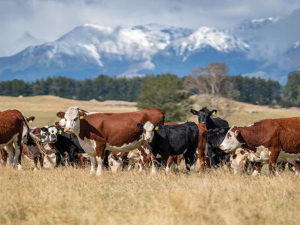DairyNZ chief executive Dr Tim Mackle says the joint decision three years ago to eradicate Mycoplamsa bovis was a difficult call.
However, Mackle says the 10-year eradication plan, while difficult, was the best option for farmers and the economy.
He made the comments to mark three years since the bacterial disease was first detected in New Zealand. The discovery shocked the industry and triggered one of New Zealand’s largest ever biosecurity responses.
“The past three years have presented enormous challenges, and it has been a difficult, uncertain and disruptive time for farmers and their families, especially those directly affected,” says Mackle.
“The process has not always been smooth and at times mistakes have been made. We have had to continually change, adapt and improve, often being guided by direct feedback from affected farmers.”
No other country has attempted to eradicate M.bovis. New Zealand has made significant progress with the number of infected properties dropping to three. To date, 250 properties have been infected.
Mackle says the M. bovis programme is on track, and the industry is confident of achieving eradication.
His message to farmers is to remain vigilant and there’s still work to be done.
“It is important to note that there is still work to be done, and we expect to find some more infected herds. There will be farms with bulk tank milk screening [that could] detect results during spring, and there will be other farms which might have been exposed to trace cattle.
“All of these farms will require testing to make sure we’ve found every infected herd. We are aiming to move fully to the long-term surveillance programme to prove the disease is gone within the next 12 months.”
Farmers are urged to rigorously maintain NAIT records.
“We have seen impressive improvements and it remains an essential tool to finish the eradication process. It’s vital that farmers tag every animal, register it in NAIT immediately, and record every movement between NAIT locations,” he says.
Biosecurity and Agriculture Minister Damien O’Connor thanked programme partners DairyNZ and Beef+Lamb NZ.
“They were part of the bold decision to attempt to eradicate this disease and have been part of our efforts since the very beginning,” he says.
It was estimated that allowing the disease to spread could cause $1.3 billion in economic losses in the first ten years alone, along with substantial animal welfare issues, and serious ongoing challenges for farmers having to manage the disease within their herds.
O’Connor says one key measure of success of the 10-year eradication plan, the estimated dissemination rate (EDR), shows strongly that the country has M.bovis firmly in its sights.
“If the EDR is greater than one, then the disease is growing. If it’s below one, we’re shrinking the disease. The EDR is now at 0.4, which is down from over two at the start of the outbreak, so we are looking harder to find fewer infected animals,” says O’Connor.
Proud farmers
Agriculture minister Damien O’Connor says farmers should be proud of the M.bovis eradication programme.
“We’ve shown, again, that we’re able to do what others countries have not in terms of disease eradication efforts,” he says.
“That’s something our farming community should be really proud of.
“Allowing the disease to spread would have caused lost productivity in our vital cattle sectors and affected the economy. Had we left M.bovis to run rampant, I’m not sure our dairy and beef sectors would have been able to weather the economic storm of Covid-19 and the challenges of drought conditions as well as they have.
“The eradication effort has not been without substantial challenges, and the impact on affected farmers can’t be under-estimated. Farmers deserve a lot of credit for their efforts. We are continuing to improve processes and work hard to support their wellbeing and recovery, including getting their compensation claims paid as quickly as possible.”


















